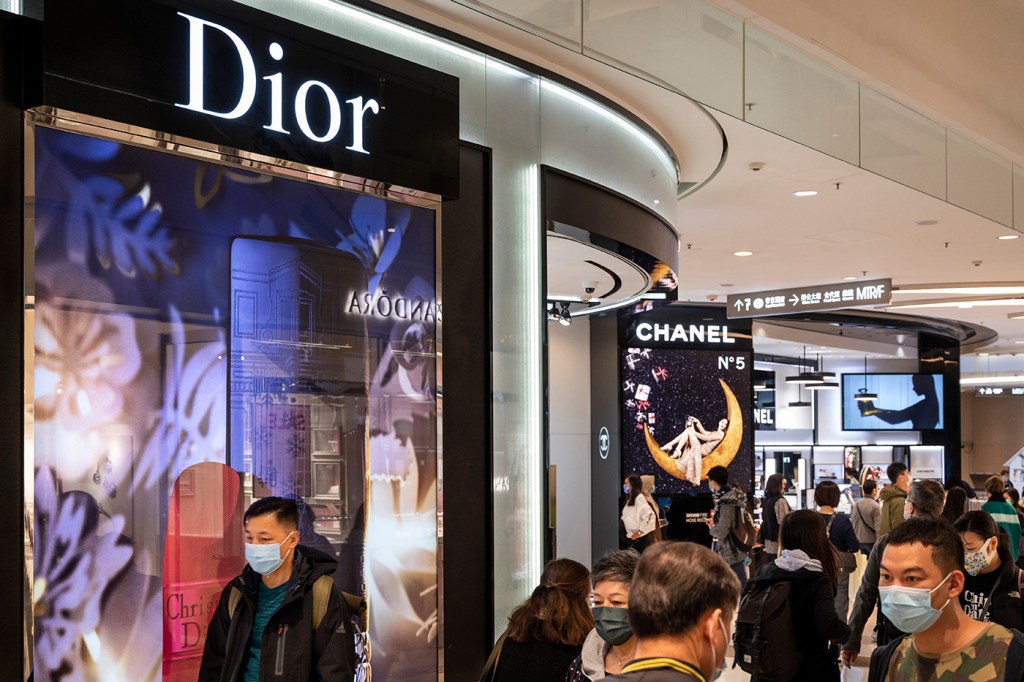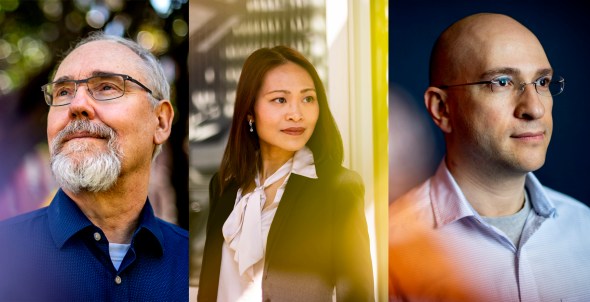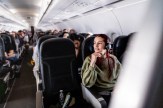Why luxury goods sales are surging in the pandemic

Forget the early weight gain known as the “Quarantine 15,” or the surge in floppy-eared pandemic pup adoptions—the newest COVID-19 trend is all about designer duds and flashy cars, and it comes with a hefty price tag.
Call it revenge spending, or call it a case of yolo (an anagram for “you only live once”), but luxury goods are reporting blockbuster sales despite ongoing supply-chain snares, surging inflation, and global uncertainty due to the pandemic.

Left to Right: William Dickens, professor of economics and public policy at Northeastern, Christie Chung, professor of psychology and associate provost at Mills College, and Yakov Bart, associate professor, D’Amore-McKim School of Business. Photos by Matthew Modoono and Ruby Wallau/Northeastern University
Last week, the fine jeweler Cartier reported a 30% increase in sales during the last three months of 2021 compared to the last quarter of 2020, while Italian fashion house Prada earned 8% more this year than pre-pandemic sales in 2019. Louis Vuitton, Dior, and BMW all have released earlier-than-expected reports in mid-January boasting sales that have far surpassed those in 2020, and even outpaced pre-pandemic sales.
So why are consumers splashing big bucks on ultra-luxury goods?
“In the early days of the pandemic, the government did a great job of supporting disposable income, but even without lockdowns a lot of people were avoiding using face-to-face services. Thus spending on restaurants, entertainment, and travel dropped like a rock,” says William Dickens, professor of economics and public policy at Northeastern.
“With disposable income holding up, that left people with lots of money to spend on things such as manufactured goods. Particularly things that could be bought without going out, stuff from the internet,” Dickens says.
The ongoing confusion brought about by the delta and omicron COVID-19 strains kept travel and restaurant spending on the back burner throughout 2021, says Dickens.
Rolls-Royce, a cushy statement vehicle long associated with well-to-do drivers in their golden years, also has capitalized on the trend. The company announced record-breaking 2021 sales across the globe, selling more luxury rides last year than in any other year of the company’s 117-year history.
Rolls-Royce CEO Torsten Müller-Otvös credited COVID-19 for the sales boost during an interview with The Financial Times.
“Quite a lot of people witnessed people in their community dying from Covid, that makes them think life can be short, and you’d better live now than postpone it to a later date,” Müller-Otvös says. “That has helped Roll-Royce.”
Christie Chung, a professor of psychology at Mills College, says the pandemic has changed the way many people spend money.
“When we think about the pandemic, what we see is that people start to wonder, ‘What is meaningful to me? What can I use my time for if I truly have a limited time to live?’ We started to see people doing things that are a little bit different from their usual routine. They started to wonder if they should use their money for something that they’ve always wanted,” says Chung.
Rather than revenge spending, a fairly new term describing a buying binge after two years of pandemic saving and missed experiences, Chung says some of the luxury buys might be about a new focus on meaningful items.
“People start to realize that they want to put their resources, which are usually limited to basic things, into things that are more meaningful to them,” says Chung.
The sudden flush of spending on designer threads and prestigious automobiles offers another insight into the pandemic, which has exacerbated the already deep divide between the ultra-wealthy and those making a living wage, according to a Jan. 17 report by Oxfam International.
“Essentially, these are the trends we’re seeing. The richest billionaires increased their wealth by enormous amounts, and that’s nowhere close to what the average consumer experiences in terms of income,” says Yakov Bart, a marketing professor and faculty affiliate at the Global Resilience Institute at Northeastern.
The 10 richest men in the world earned roughly $1.2 billion a day since the start of the pandemic, Oxfam reported. Meanwhile, more than 160 million people are estimated to have been pushed into poverty over the last two years, according to the report.
“That’s where we see most of the luxury consumption,” says Bart.
For media inquiries, please contact media@northeastern.edu.





